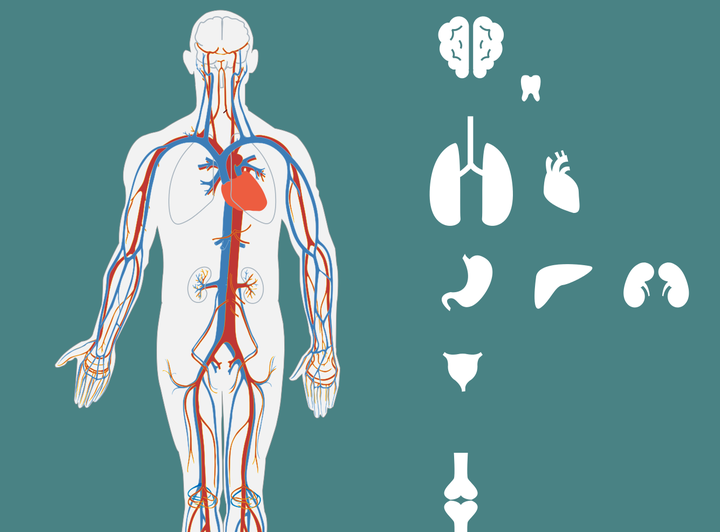And What the Doctors of Tomorrow Are Doing About It

A medical student at one of the nation’s leading schools recounts how their “problem based learning cases frequently present patients of color as non-compliant, poor, and diseased”. A white child is depicted as a “brave trooper in dealing with his pain”. Conversely, a black female patient with diabetic ketoacidosis is described as “combative”.
At first glance, such differences in perception of patients may appear to be innocuous. However, the author of this anonymous submission to Systemic Disease—an online platform seeking to address bias in medicine through storytelling and student-led advocacy—astutely observes how racial biases inform the tone and language used in these instructional models for medical students.
Indeed, just earlier this month the Association of American Medical Colleges hosted its first summit on Inspiring Intersections: A Call to Collaborate, Challenge, and Change. Speakers engaged in discussions on how unconscious bias is pervasive in all facets of medicine ranging from medical school admissions and medical education to faculty advancement and patient care. One of the speakers was Dr. Tamika Cross, a Black female physician who was notoriously barred from providing emergent care to a fellow passenger after her medical credentials were questioned by the flight attendant. Underlying racial and gender bias led to the delay in needed medical care.
Mounting evidence indicates that individual provider bias can result in worse health outcomes and contributes to the larger health inequities that persist in this nation. However, while many curricular reform efforts to expand training on health inequity and bias continue to be led by medical students across the country, their sustainability cannot be guaranteed unless the initiatives are ingrained into living institutional memory.
Conversations during the AAMC summit were striking as they pointed out the ubiquitous presence of bias not only among those currently responsible for treating patients but also among those training physicians of the future.
The current dearth of diversity in medical schools is one reason why such bias may continue to endure. Although women are increasingly enrolling into medical schools, they continue to be underrepresented in higher levels of leadership such as full professorship, chairs of departments or deans of medical institutions. Those who are Black or Latino or of economically disadvantaged backgrounds are grossly underrepresented in medicine, with less Black males reported to have applied to medical schools in 2014 than in 1978.
A lack of diversity in training environments allows for flawed assumptions to remain unchecked and it is a problem for the medical field that will only continue to grow as our nation’s population becomes increasingly diverse.
Christian Pean, now a first year resident in orthopedic surgery at NYU Hospital for Joint Disease, is painfully aware of how unchecked biases can cause risk to one’s life within the very institution entrusted to safeguard it. While seeking medical treatment, his brother Alan was shot in the chest by an off-duty police officer moonlighting as hospital security. Pean recalls how racial bias and stigma of mental illness “played a role in creating an environment where [his] brother’s shooting could occur in the first place”.
As part of their campaign Medicine Not Bullets, Christian and Alan are now traveling across the country speaking to medical students on how to address persistent racial bias and mental health stigma in health care settings. They have forged alliances with student groups like White Coats For Black Lives, which was created in December 2014 after organizing demonstrations across the country declaring racism a public health crisis.
Rachel Hardeman, lead author of the paper “Structural Racism and Supporting Black Lives—The Role of Health Professionals” in the New England Journal of Medicine and a faculty mentor for the student-run Systemic Disease project, has long examined the impact of racial bias on the attitudes, behaviors, and well being of medical students. Her research has found that “implicit attitudes are developed over a long period of repeated exposure and are difficult to change”. However, what Hardeman finds notable is that “even small differences in implicit racial attitudes have been shown to affect behavior”.
Fortunately, more and more medical students have been ramping up efforts to better address issues related to unconscious bias with their peers and even instructors.
At Yale, medical student Robert Rock developed trainings that employ fine art as a medium for discussing identity and hierarchies of power as they relate to clinical practice. Rock hopes that his trainings will “help groups within the healthcare profession move past the paralyzing guilt of culpability into a safe space where they can engage in candid dialogue about the societal assumptions we’re all aware of but rarely analyze”. Initially offered as a pilot to a group of twenty health professions students at Yale, the art tour is now a mandatory part of orientation for all incoming first year medical students and has been offered to faculty and alumni of the school.
Despite increasing curricular reform at medical schools around unconscious bias, there is much more work that still needs to be done. Hardeman stresses that curricula that “explicitly address and discuss these topics is important but it is not enough”. To move forward, it is imperative “to make the link between institutional bias and unconscious bias”.
Pean is optimistic about the future of his profession. To him, “medical students and residents entering the field these days are more conscientious of how structural violence impacts health outcomes and they’re taking a stance”.
